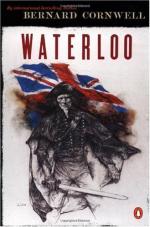|
This section contains 665 words (approx. 2 pages at 400 words per page) |

|
British Military Units
Cavalry
Sovereign' Guard
Union Brigade of the Royals
The King's Own Household Troops
The Life Guards
King's Dragoon Guards and Blues
Scots Greys
Inniskilling Horse Infantry
Prince of Wale's Own Volunteers
Kings German legion
Grenadier Guards
Coldstream Guards
French Military Units
Cavalry
Cuirassiers
Dragoons
Hussars
Lancers Infantry
Voltiguers
The Imperial Guard
Weapons
Musket (+bayonet)
Baker Rifle
Nine-pounder cannon
Eight-pounder cannon
Howitzer
Rocket artillery
Lances
British Cavalry sword (35 ins)
Cuirassier Klingenthal sword
Curassier breastplate
Sabre
Field Formations
Infantry line of battle
Infantry Square
Infantry Column
Skirmishing lines
Cavalry line of charge
British Regimental Colours and French Eagles
All army units in the battle employ large banners or standards as rallying points and visual symbols representing each regiment or corps. These are often the subjects of fierce fighting as men from opposite sides try to seize them or defend them. They are a continuous tradition from the...
|
This section contains 665 words (approx. 2 pages at 400 words per page) |

|




